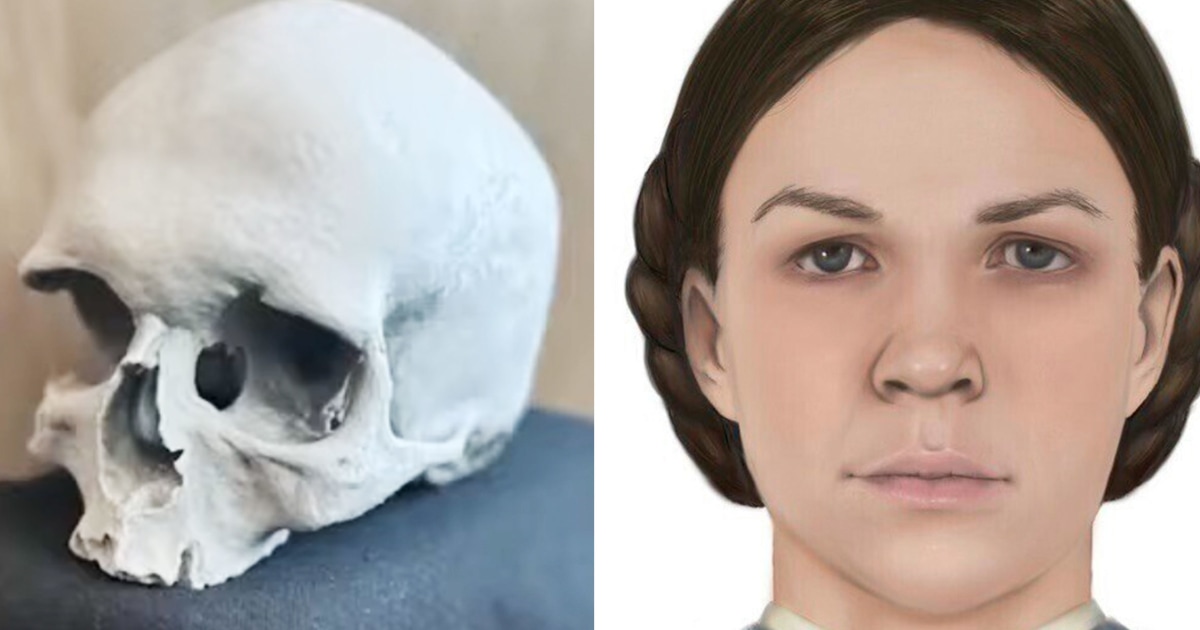World
DNA testing reveals skull found in a wall belonged to teen who died 150 years ago

DNA testing has revealed that a skull found decades ago in the wall of an Illinois house belonged to an 18-year-old woman who died just after the American Civil War.
Officials in Kane County told a news conference Thursday that a skull discovered during renovations at a property in Batavia, west of Chicago, in 1978 has now been matched to Esther Granger, an Indiana woman who died after childbirth in 1866.
County officials were able to make a family tree and even contact a living relative, Granger’s great-great-grandson, who submitted a DNA sample. They also generated an impression of her likely appearance. Authorities have speculated that Granger’s body may have been stolen and moved by grave robbers.
The skull was thought to be old, perhaps predating 1900, but despite an investigation it had been kept in storage at Batavia Depot Museum for almost 50 years with its mystery unsolved.
It was rediscovered in a box while museum staff were cleaning in 2021. The police were contacted and the coroner’s office began the process of formal identification using modern techniques.
“Esther was born on Oct. 6, 1848 in Indiana. In 1865 at 16 years old she married Charles Granger and after a few months became pregnant with their first child,” Coroner Bob Russell told the news conference.
“In May of 1866, Esther gave birth to a baby girl but lost her life soon after due to complications from childbirth,” he said. Granger was buried in Indiana and the baby was named Esther in her honor.
The county had used Texas company Othram Laboratories to sequence the skull’s DNA. The was crowdfunded through DNASolves.com, which raised $7,500.
After just three weeks Othram produced an ancestral match and were able to find Granger’s great-great-grandson, Wayne Svilar, 69, a retired sergeant from Portland, Oregon. When contacted in April he was wary of taking part.
“To be completely honest we didn’t believe a word of it,” he told the news conference. “I said, ‘you can keep talking if you want but I don’t believe you.'”
Svilar founded a cold case unit while working at the Portland Police Bureau in 2004 and he currently works on cold cases for Multnomah County in Portland — he and his wife thought the call may be related to an old case of his.
“What convinced me that this was not some well-organized scam was their passion for their work,” he said. “There is this sense of closure. I wish my mom were here so I could tell her the story, she would have loved it.”
He added that the illustration of Granger’s face had a likeness of his own mother.
The mystery, however, is not entirely solved. How did the skull end up in a wall in Illinois when Granger’s body was buried in Indiana?
“We will never definitely know exactly, but with records and good reason we’ve come to a common sense theory: we believe Esther was a victim of grave-robbing,” Russell said.
“Grave robbing was quite common in that era as it was quite profitable. The grave robbers made the equivalent of three to four months’ earnings for the average person working 60 hours a week,” he added.
While the practice was illegal, the law forbidding grave robbing was not always enforced, Russell said. It was hugely controversial as a result, with riots and even murders of alleged perpetrators following some suspected grave robbing incidents.
Russell speculated that the skull could at some point have been bought by a medical student.
Granger was buried at West Batavia Cemetery, where her name was already engraved on a stone tower. Svilar traveled to be at the internment and gave a eulogy.
Coincidentally, on Wednesday the neighboring town of North Aurora announced it had solved a cold case murder investigation that dated back to 1979.








